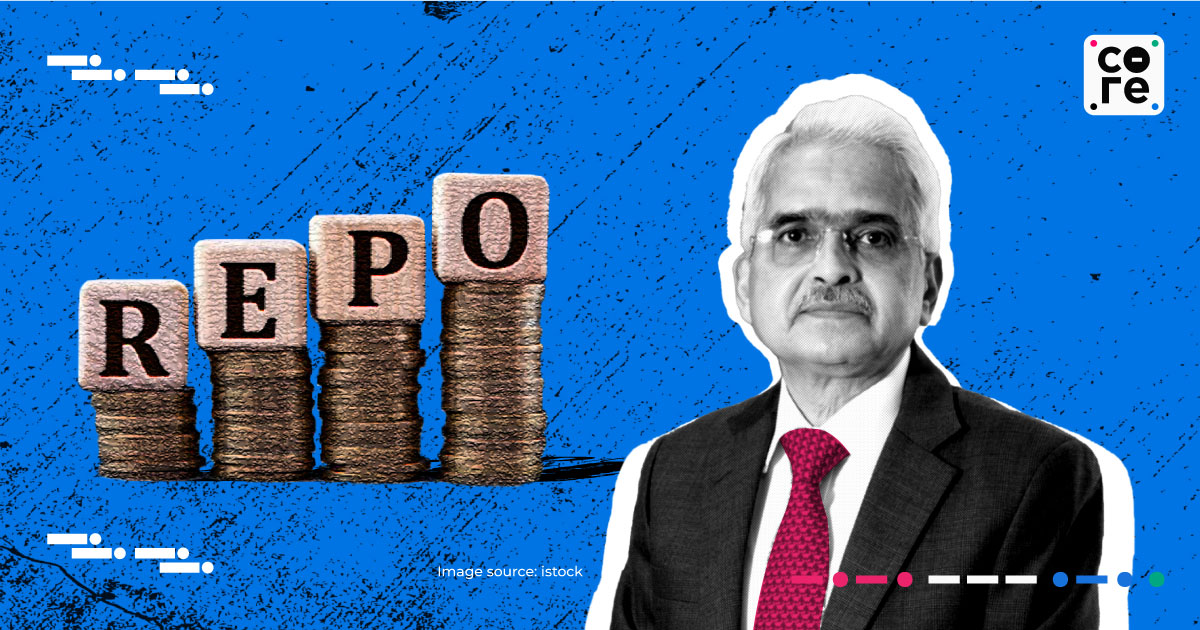
- Home
- Top Stories
- RBI Pauses Repo Rate Hike: Why Borrowers...
RBI Pauses Repo Rate Hike: Why Borrowers Must Maintain Caution
The RBI has hiked the repo rate six times since May 4, 2022. It was 4% last year and now stands at 6.5%.

The Reserve Bank of India's (RBI) six-member Monetary Policy Committee unanimously decided on Thursday to maintain its key policy rate - the 'repurchase' or 'repo' rate - at 6.5%.�
This ‘repo' rate is the rate at which the RBI lends to banks.�
The RBI has hiked the repo rate six times since May 4, 2022. It was 4% last year and now stands at 6.5%.�
This was until April this year when this rate hike cycle was paused. The word "paused" is critical here, as we don't know if future hikes await us.�
If the horizon from May 2022 to June 2023 is considered, nerds in the financial space would call this a 250-basis-point overall hike. One basis point (bp) is one-hundredth of a percentage point (the math: 6.5% now minus 4% from last May is 2.5 percentage points or a 250-bps difference).�
Why?
You've probably heard over the past year that central banks throughout the world have been "hiking their interest rates" to battle inflation. You heard correctly.�
The RBI was no exception. It began a cycle of rate hikes in May 2022 in response to the post-pandemic world returning to normalcy and Russia's invasion of Ukraine - both of which cont...
The Reserve Bank of India's (RBI) six-member Monetary Policy Committee unanimously decided on Thursday to maintain its key policy rate - the 'repurchase' or 'repo' rate - at 6.5%.
This ‘repo' rate is the rate at which the RBI lends to banks.
The RBI has hiked the repo rate six times since May 4, 2022. It was 4% last year and now stands at 6.5%.
This was until April this year when this rate hike cycle was paused. The word "paused" is critical here, as we don't know if future hikes await us.
If the horizon from May 2022 to June 2023 is considered, nerds in the financial space would call this a 250-basis-point overall hike. One basis point (bp) is one-hundredth of a percentage point (the math: 6.5% now minus 4% from last May is 2.5 percentage points or a 250-bps difference).
Why?
You've probably heard over the past year that central banks throughout the world have been "hiking their interest rates" to battle inflation. You heard correctly.
The RBI was no exception. It began a cycle of rate hikes in May 2022 in response to the post-pandemic world returning to normalcy and Russia's invasion of Ukraine - both of which contributed to global price rise due to geopolitical and economic causes.
For India, the repo rate is key to how these rate hikes transmit to the larger economy and keeps inflation in check through two channels: make credit more expensive and sweeten savings.
Credit products like some home loans are linked to this repo rate, meaning that existing and new borrowers would find it dearer to take out or service their mortgage. But saving products like fixed deposits
But in April and now in June, this cycle paused. This is because the RBI believes that the full impact of all these rate hikes has yet to be realised.
Plus, inflation data reveals a picture desirable to the objective of these hikes. In April (whose data was released last month), retail inflation touched an 18-month low of 4.7%; a great improvement from the 7.79% in April last year. Nerds measure this change using the ‘consumer price index'.
But this month, the rate hike pause is also partly attributed to something interesting – your Rs 2000 banknote.
On May 19, the RBI said that they were being withdrawn, though they still remain legal tender. As they find their way back into the banking system as consumers exchange or deposit them in their bank accounts, banks would be in a position where they find themselves with a sudden excess in liquidity.
In Thursday's interaction with the media, RBI governor Shaktikanta Das said that ₹1.8 lakh crore worth of these notes or half of them in circulation have already found their way to banks.
Experts believe that they would be looking to lend this excess liquidity out, and would not be hiking the rates of their own products too much.
Is this the end of the tunnel?
The RBI is in wait-and-watch mode. Therefore, if you have a loan and you think that your mortgage may not get more expensive, you should be cautious.
This is because Thursday's statement by the central bank makes something clear – retail inflation has come under control, but headline (or broader) inflation across the economy, which includes food and fuel, still is above what it tolerates.
This is just their way of saying that they are not ruling out any further rate hikes.
Moreover, the root causes that kickstarted this cycle still persist – the war is far from over, labour shortages are widespread in advanced economies and geopolitical uncertainties come from out of the blue.
And that's everyone's problem.
The RBI has hiked the repo rate six times since May 4, 2022. It was 4% last year and now stands at 6.5%.

